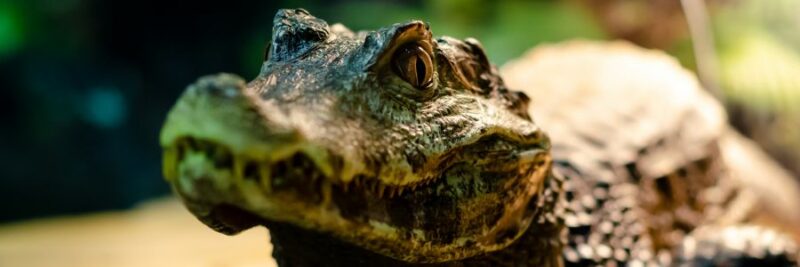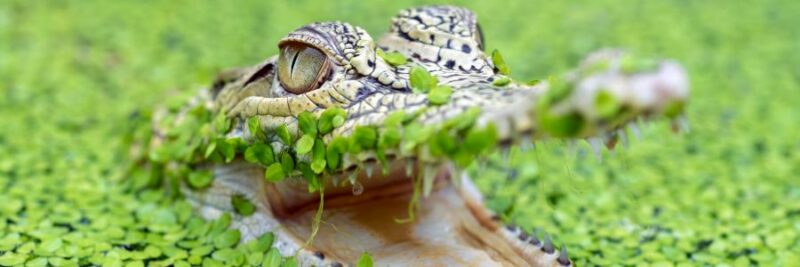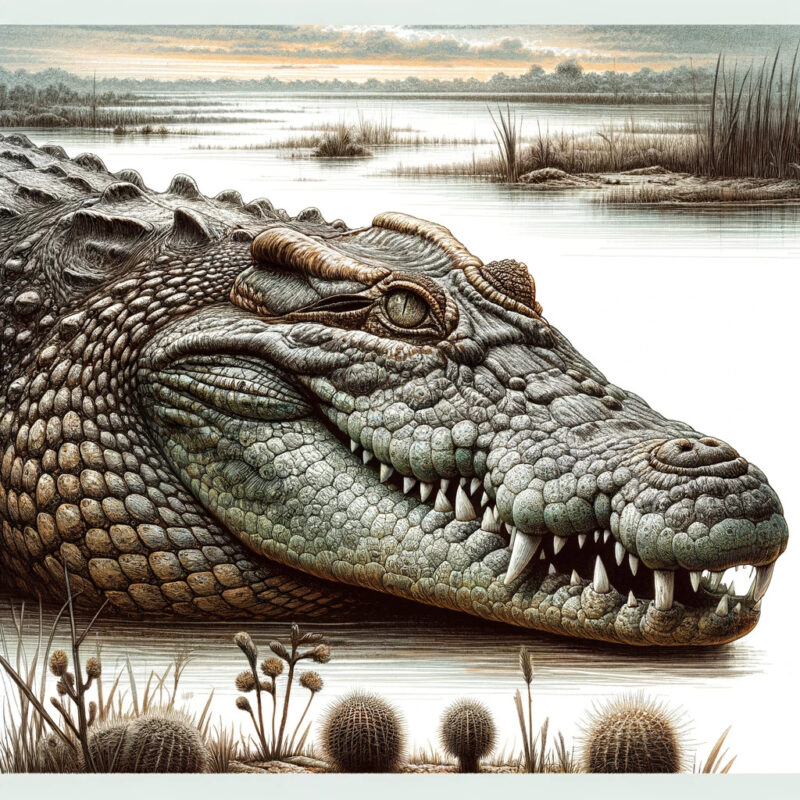Understanding the Attraction - And Ethical Quandaries
I’m sure many hyper-enthusiastic herpers have fantasized about keeping one of these prehistoric leviathans. And who could blame you? That armored hide…the muscular coil…the raw, patient menace – crocodilians captivate the imagination in a singularly profound way. They’re living dinosaurs still stalking our modern Earth, relatively unchanged after 200 million years of evolutionary fine-tuning. How incredible would it be to interact with such creatures daily?
But therein lies the first ethical consideration of captivity – these animals already occupy optimal ecological niches fine-tuned over eras. They THRIVE in tropic wetlands and waterways, not artificial enclosures. So we must scrutinize whether confining complex crocodilians truly aligns with their best interests…or only satisfies our own curiosities.
See, providing properly for these remarkable animals requires immense investments of resources, space, knowledge and enrichment. Most critically, it demands situating their wellbeing ABOVE our own interests should tensions arise. If we cannot meet crocodilians’ expansive biological drives in captivity, then we owe it to them to leave wild specimens be.
But for legitimate zoos and conservationists equipped to fulfill all husbandry duties richly, as well as certain advanced hobbyists, ethical arguments CAN support custody. So today I’ll overview ideal enclosures, top species, laws and other key considerations to guide decisions. My goal – help dedicated keepers succeed while compelling casual enthusiasts to reconsider hasty purchases that could compromise animal welfare. Now let’s dig in!
Laws And Permits - Critical First Steps

While regulations vary internationally, private crocodilian ownership falls under state/provincial jurisdiction in North America subject to federal overrides. And all impose AT MINIMUM strict permitting processes for custody. Containing apex predators demands extensive precautions and liability coverage, after all.
Several states outlaw private possession altogether, while most limit viable species and numbers. And permits often carry heavy fees, proof of expertise prerequisites and rigorous enclosure inspections. Annual renewals may also apply.
So never presume lawful ownership sans proper licensing. Also research municipal statutes – additional local bans could supersede looser state codes. Only initiate acquisition efforts with ALL required documents in hand. Skirting protocols here courts disaster for animals and owners alike.
Ideal Species - Smaller Tropical Crocodilians

Okay, so WHAT groups merit consideration given daunting Spatial and enrichment needs? Well optimally, smaller tropical species that don’t exceed 8 feet or so at maturity. This allows for proper minimum enclosure dimensions while remaining more practical for heating and containing than 13+ foot crocs requiring zoo-sized habitats.
Two species in particular stand out – smooth-fronted and dwarf caimans inhabiting South American rainforests. Both max out between 5-6 feet, occupying modest territories in nature. This enables adequate space even in private settings. And their primarily fish-based diets simplify provisions acquisition compared to large mammalian/avian predators. Just be sure to specifically verify legislation includes caimans where you live.
I’ll also mention – certain slider and caiman dwarf species like Schneider’s dwarf caiman also qualify given their smaller adult size. But DO pass on all Alligatoridae outside dwarf caimans – no ethical path exists to properly house 13 foot, 1000 pound apex predators in typical home settings. We’ll revisit why next.
Enclosures - Construction And Spatial Considerations

Now, indulging tropical crocodilians demands BOTH dry land and pool areas plus heating/lighting provisions reflecting native habitats. At minimum, each animal requires ~100 square feet space comprised of ~75% water and ~25% dry secondary basking zones.
Construction-wise, reinforced concrete walls and floors work well enclosing land sections adjoining heavy-duty pool liner pond areas. Design spaces maximizing dimension rather than height too – these terrestrial reptiles appreciate sprawling floors more than vertical heights.
As digits, a modest 6×6 land space adjoined to an 8×5 pool offers suitable proportions scaling upward for multiples. Just ensure ample 270+ gallon volumes and 3 foot depths allowing total submersion. And include powerful filters and water heating maintaining temperatures between 82-88 Fahrenheit.
Finally, positon basking lamps over dry land areas offering isolated 120 degree spots alongside 85 F ambient temperatures on land. And allow unimpeded daily sunlight access replicating equatorial conditions. Robust lighting proves critical promoting feeding, digestion and disease resistance.
If THIS involved for you, keeping small tropical crocodilians may provide ethical enrichment. But fall short anywhere – say by keeping large, hardy North American Crocs in bare 75 gallon stock tanks – and animal welfare suffers immediately. And no true passion for these creatures can justify those outcomes.
Ethical Considerations For Procurement And Handling

Alongside housing, procurement sources and handling methods determine if custody serves crocodilian wellbeing too. Let’s get philosophical regarding both.
Ethically acquiring crocs means shelter adoptions or captive breeding from reputable ranches. Wild capture uproots animals from optimal ecological niches without credible conservation need, while supporting illicit poaching ravaging wild populations for the pet trade. Begin right by sourcing legally captive-bred animals only.
And once secured, prioritize habitat enrichments facilitating natural behaviors without invasive handling stress. Offer carcass feedings prompting tearing, death rolls and other instinctive actions. Introduce nest boxes, tube tunnels and floating wooden platforms too, withdrawing only for maintenance. Let their space nurture crocodilian essence while direct interactions remain infrequent.
That said, SOME supervised interactions MAY enrich lives if introducing ample stimuli. But never treat crocodilians as ‘friendly pets’ per se – these innately weary animals merely tolerate handling while preferring private enclosures meeting biological needs. So remain vigilant for stress signs like hissed exhalations or gaping jaws during sessions – ceasing interactions if observed.
Only leverage restraints as a last resort given immense confinement stress. And NEVER pose naive risks like unrestrained contact. Your fascination cannot outweigh animal welfare priorities here.
Closing Considerations On Keeping Crocs And Gators

In closing friends, I applaud sincere desires bonding with these astonishing beasts. But casually acquiring pet crocodilians courts grave ethical consequences for animals and owners alike if failing to meet expansive habitat needs. Please carefully consider laws in your area, procurement sources, housing scale, costs, expertise level and above all – the crocodilians’ best interests – before moving forward here.
With ample diligence and resources, modest custody arrangements CAN align with animal welfare for certain small species. But lacking legitimate conservational need, this realm remains hard to justify ethically relative to letting free crocodilians be. If intrigued but uncertain of providing optimally, I encourage admiring wild populations instead through zoo trips and sanctuary visits. The wild spaces our planet still retains need apex predators like crocodilians playing ecological roles. And perhaps humanity owes it to them to make sure captive populations only expand where absolutely warranted.
I welcome perspectives on this expansive issue! Now let’s get into some lingering questions…

Frequently Asked Questions About Ethically Keeping Crocodilians and Alligators
Small tropical crocodilians like smooth-fronted caimans and Schneider's dwarf caimans under 6 feet adult length can work in large private habitats. Avoid huge, dangerous crocodilians requiring impractical enclosures.
Likely not. A few states allow permitted custody by experts, but casual ownership remains illegal and impractical. Significant expertise and licensing is required where allowed at all.
100+ square feet comprising mostly water plus ample dry land areas. Heat, lighting, swimming space and enrichment elements promoting natural behaviors are also essential.
No, as properly raising hatchlings remains exceptionally difficult even for experts. Additionally, supporting wild capture and the illegal pet trade comprises unethical practices devastating wild populations.
